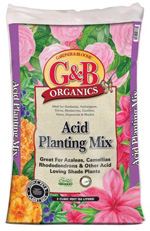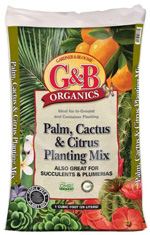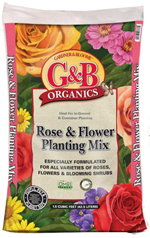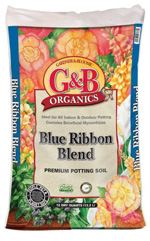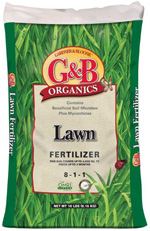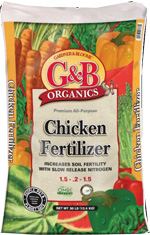|

|
 |
FEATURED QUOTE: "A garden is always a series of losses set against a few triumphs, like life itself." |
 H&H Nursery Will Be Closed On Thanksgiving Day |
 |
|
Now is the time for
Prohibit Pre Emergent  To prevent Annual Blue Grass (Poa Annua) in your lawn, we recommend a pre-emergent herbicide like Prohibit. A pre-emergent herbicide that provides residual control of many broad leaf weeds, grass and crabgrass in turf grass. New to homeowners, but widely used in the landscape and golf course industry. Prevents weeds and feeds the lawn all in one step. |
 |
 |
|
Some Fun Thanksgiving Facts for You:
|
 |
|

|
Invasive plants--just the term brings to mind visions of horror movies such as the classic Little Shop of Horrors or, more recently, The Ruins. But here in the "real" world, what, exactly, is an invasive plant? Should it be a valid concern and, if it is, what can we do about it? Invasive plants are no different than their counterparts in the animal and disease arenas. An invasive plant is generally defined as one that has the ability to grow aggressively outside its natural range. Oftentimes, its ability to do this stems from the fact that it is growing outside its native range, because the diseases, insects and foraging animals that naturally would control its growth and spread are not present in its new habitat. There are many factors in determining whether a plant is invasive or not. What do we mean? For starters, some plants are more invasive than others; some considered as moderately invasive can be controlled easily with a little well-timed maintenance. Climate and location play an important role. Many plants are considered invasive in some parts of the country and not in others. Five generally recognized attributes of invasive plants are:
Why should you be concerned? Invasive plants can disrupt many natural habitats, ultimately affecting wildlife populations and choking out native plant species. Most people would agree with the statement, "Variety is the spice of life". Where allowed to run rampant, invasive plant species can severely restrict this biodiversity, both in terms of plant life and the wildlife that depend on it to survive. They are especially problematic in areas such as wetlands, sand dunes and fire-prone areas--in fact, over $100 million per year is spent in the U.S. combating invasive plants in wetlands alone. Where do these invasive plants come from? Sometimes, their arrival at their "new homes" is completely accidental, as seed in agricultural products or in shipments from overseas. Other times, they are sold at garden centers. Because of gardening enthusiasts’ ongoing quest for hardy, drought-tolerant, fast-growing specimens, these plants are often propagated and offered to the public to fulfill these desires. Only later is it discovered that these plants may offer a little too much of a good thing. Kudzu (known as "the vine that ate the South") is one of the more infamous examples of this. It was originally introduced as a ornamental shade vine for porches, arbors and such. Now it's shading (and killing) trees all over the Southeast. What can you do? This is where we come in. Next time you shop for plants, let us know that you would like to avoid potentially invasive plants in your garden. Or ask us how to keep those "hardy, drought-tolerant, fast-growing" plants from becoming invasive. For instance, much of the mint family can be invasive--but they are reasonably safe to grow in pots, or in an area of the garden where you can easily remove "volunteers." And, of course, they are quite safe to grow indoors! Make use of our expertise to help guide you in selecting plants and growing methods that will not present a problem in the future--and help preserve the plants and wildlife indigenous to our area! |

|
If you're being awakened in the middle of the night to the sound of turned over garbage cans accompanied by high-pitched chirping sounds, chances are you've been paid a visit by those little bandits called raccoons. Raccoons are generally active at night, when they are most likely to raid your garbage area, looking for discarded fruit, vegetables, and anything else that might make a tasty snack. Their contact with humans is normally motivated by two basic things: food and/or shelter. Getting rid of raccoons starts with securing the sources of these temptations, and if that doesn't deter them, there are a few other alternatives. 
The key to keeping raccoons away is to make your home a less inviting place to visit. Keep your garbage cans sealed with bungee cords if stored outside, or store them in the garage or storage shed. Make sure all of your foundation and basement vents are in good shape and have no holes in them; otherwise, raccoons might nest under your home. If you have a dog or cat door into the garage, make sure not to store food or feed pets in there. If you have taken care of the basics, and the pesky critters still want to hang out, you might want to consider a few other options. There are a number of humane traps that will help you trap them live and allow you to transport them to a wooded area away from your home. Be careful, though, and wear thick gloves when handling traps, because raccoons will try to bite if agitated. Motion-sensing lights and sound devices will also help keep raccoons away. Nocturnal by nature, they don't like bright lights. You can also apply a raccoon repellent to garbage cans and around the yard to deter them. Many wildlife specialists use this method because the repellent uses the scent of a predator such as a coyote, wolf, or mountain lion to mark your garden as a predator's territory. So don't be kept up at night because raccoons are having a party at your house. Take action today and keep those raccoons away! Important Note: Two illnesses common to raccoons are distemper and rabies. If you see raccoons, keep your pets inside. Raccoons are primarily nocturnal, so if you see one in a populated area during the day, especially if it is acting strangely, be sure to avoid it and report it to a wildlife specialist. |
 |
|
Do I really need two fruit tree varieties to produce fruit? Answer: Our staff of garden experts knows which trees make the best "mates" for others, and will be happy to help you with any questions. |
 |
|
What You'll Need:
Step by Step: Directions here
|
 click here for a printer friendly version of this page
click here for a printer friendly version of this page |
Written content © 2004-2014 Garden Partners LLC, or respective authors. All Rights Reserved. Privacy Policy. All written content contained in this site is protected by United States copyright law and may not be reproduced, distributed, transmitted, displayed, published, or broadcast without prior written permission of Garden Partners, LLC. You may not alter or remove any trademark, copyright or other notice from copies of the content. Would you like a newsletter like this for your nursery or garden center? Please feel free to look at what we have to offer and contact us for your garden center marketing solutions. |




